In Conversation with Pierpaolo Piccioli on the “Forever: Valentino” Exhibition in Qatar
V Fashion Director Gro Curtis discusses legacy, poetry, and timeless design with the Creative Director of Valentino

Qatar Museums has teamed up with Maison Valentino in the presentation of “Forever: Valentino,” an exhibition that explores the heritage of the Italian fashion house and the legacy of Valentino Garavani. The exhibition displays the journey of couture in the Maison, including over 200 pieces of Haute Couture and pret-à-porter while exploring the role that Rome has played in the evolution of Valentino as a brand.
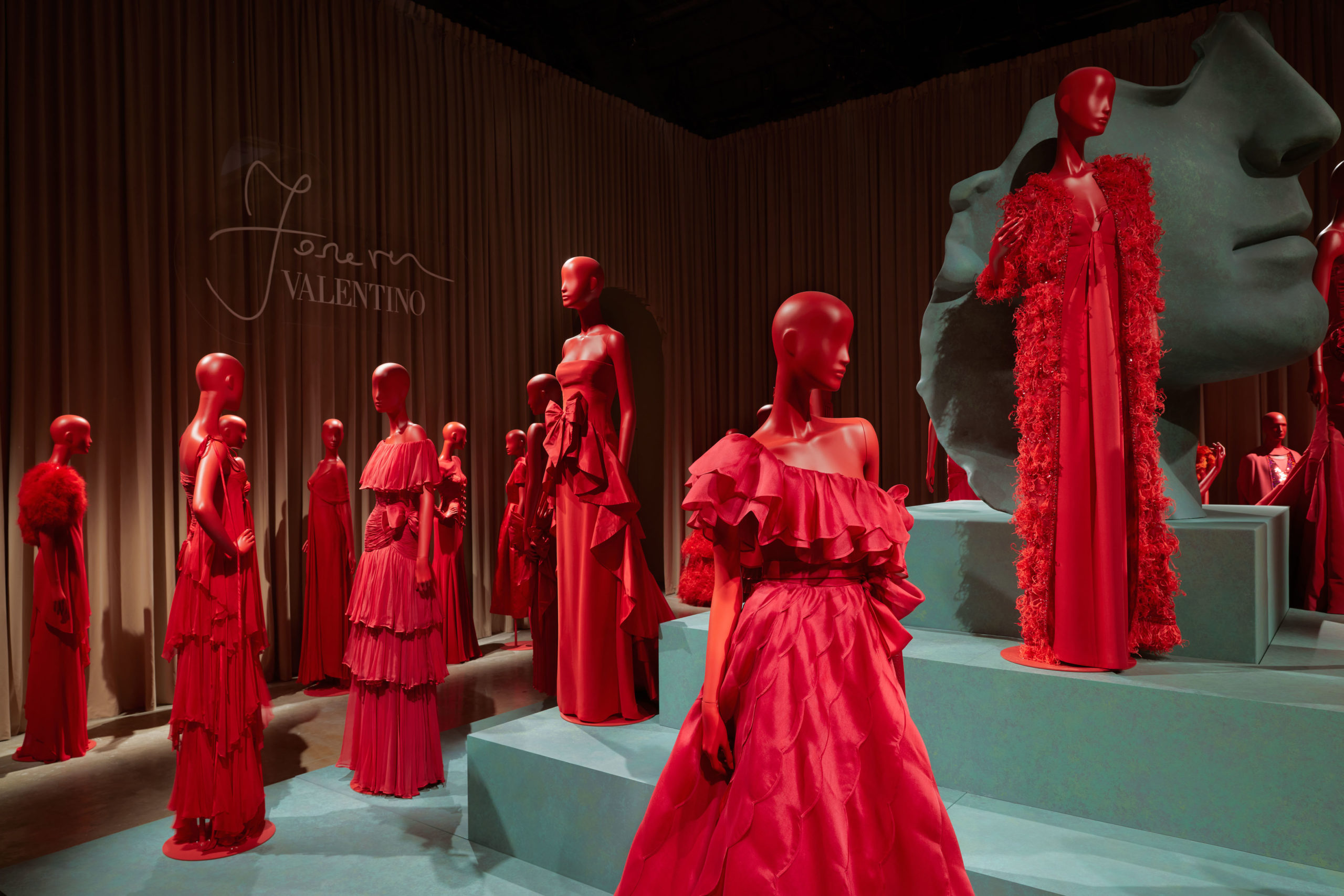
The presentation is Valentino’s largest exhibition to date, as well at the fashion house’s first exhibition in the Middle East. “Forever: Valentino” coincides with the 90-year birthday of Valentino Garavani, as well as highlighting the heart-warming and breathtaking Winter 2022 Couture show that was held at the Spanish Steps in Rome this past July.
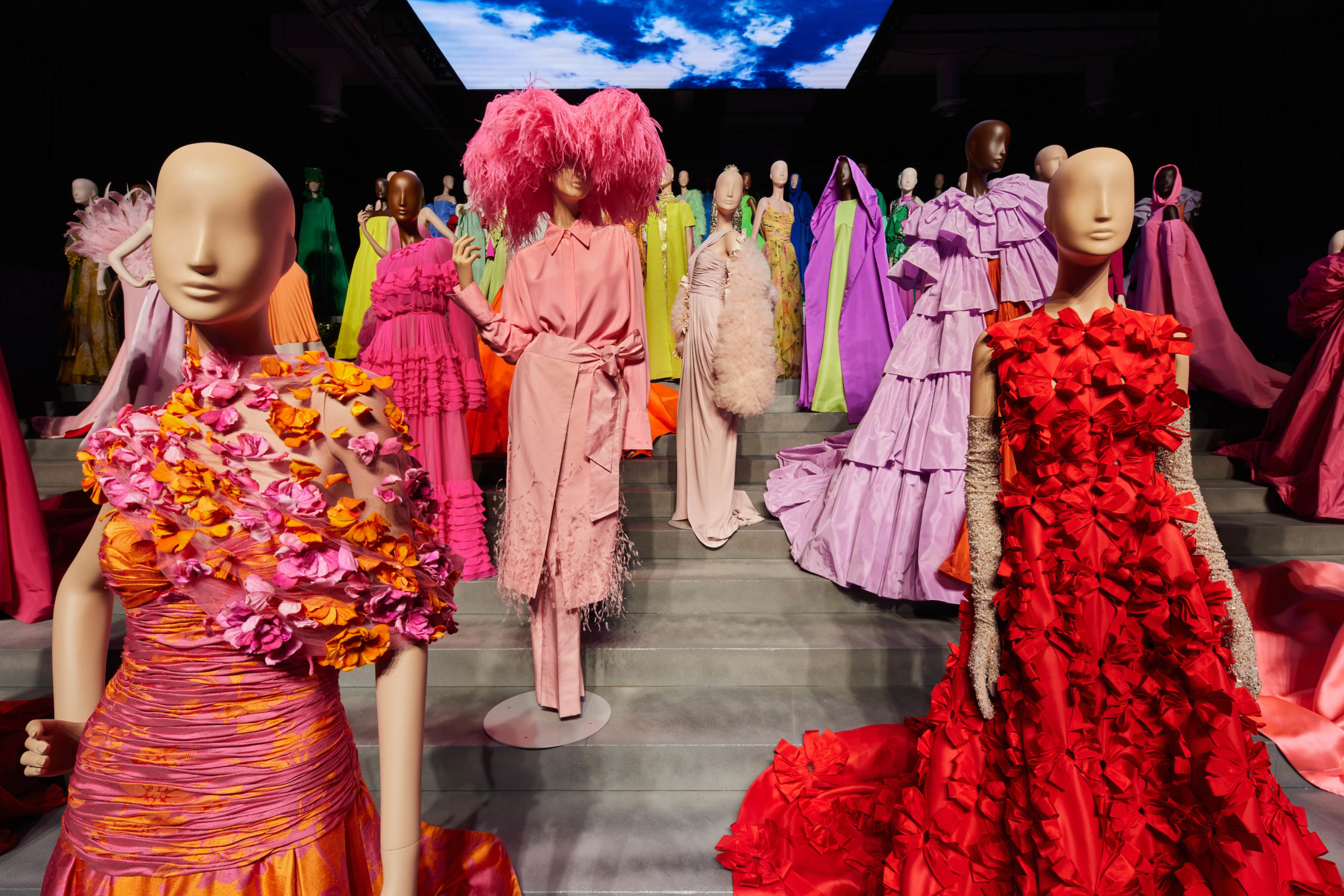
In celebration of the exhibition, the beloved Creative Director of Valentino, Pierpaolo Piccioli sits down with V’s very own Gro Curtis, accompanied by curators Alexander Fury and Massimiliano Gioni, to discuss the creation of this extensive display of couture.
Gro Curtis: Pierpaolo for you, a lot of artists are afraid of any type of introspection because it presents somewhat of a certain burden. How did you feel about all of this? Did you have any kind of fear or a sense of burden?
Pierpaolo Piccioli: No, not at all. I’m not afraid.
GC: But for sure it was an emotional experience?
PP: Emotionally, yes, it was very evolving. It’s like a moment when you reflect about as I was saying regarding my beginning show. It was a reflection about my own identity and the identity of the brand. And the connection, the beginning, after 23 years in the house. So it’s like a moment when you stop and you reflect about the identity of the brand, your own identity, how much of them are one to the other. And Valentino, he’s a witness of his times from the idea of our lifestyle to the community. So it’s a different way of witnessing it, because the world is different, but I actually like to embrace the present and the future.
GC: And it’s also like a beautiful love letter to Rome.
PP: Of course, because Rome is what made Valentino so special. Roma is about these different layers that hold each other that create a sort of balance between the Mussolini, the Baroque angels, the Madonnas, the government, the Imperial Roman, everything is floating together and lives together in a quite beautiful balance. So I like that. I like that as a philosophy of life.
This idea of cultures and individuals that can stay together, to me, that’s beauty. When you’re able to embrace and to give an idea of beauty that comes from different cultures. That can be something that’s unique.
GC: What I also find very fascinating is how cohesive everything is. Because, we’ve seen a lot of fashion exhibitions, right? And you can kind of know by era, who is the designer, what was the era, and so on. But here, when you go from room to room, it all feels so connected. And the fact is that of course, some of the looks are decades apart. We’re talking about different times. So for me, that’s one of the most memorable out takings, just how cohesive the whole vision to the decades has been, and how smart it was to simply adapt it to each era. So I was fascinated by that. And I guess it’s also kudos to you because I mean, the legacy has to go on. Even after you, the legacy has to go on. So I really find it fascinating how well-connected that is. How it doesn’t feel, “Oh, this is an old dress, this is a new dress.” All of them are just beautiful dresses that also work today, perfectly. So that was my outtake. It’s not like a typical exhibition of a dusty garment with history. These are still alive. Like I can still see them on the carpet in real life.
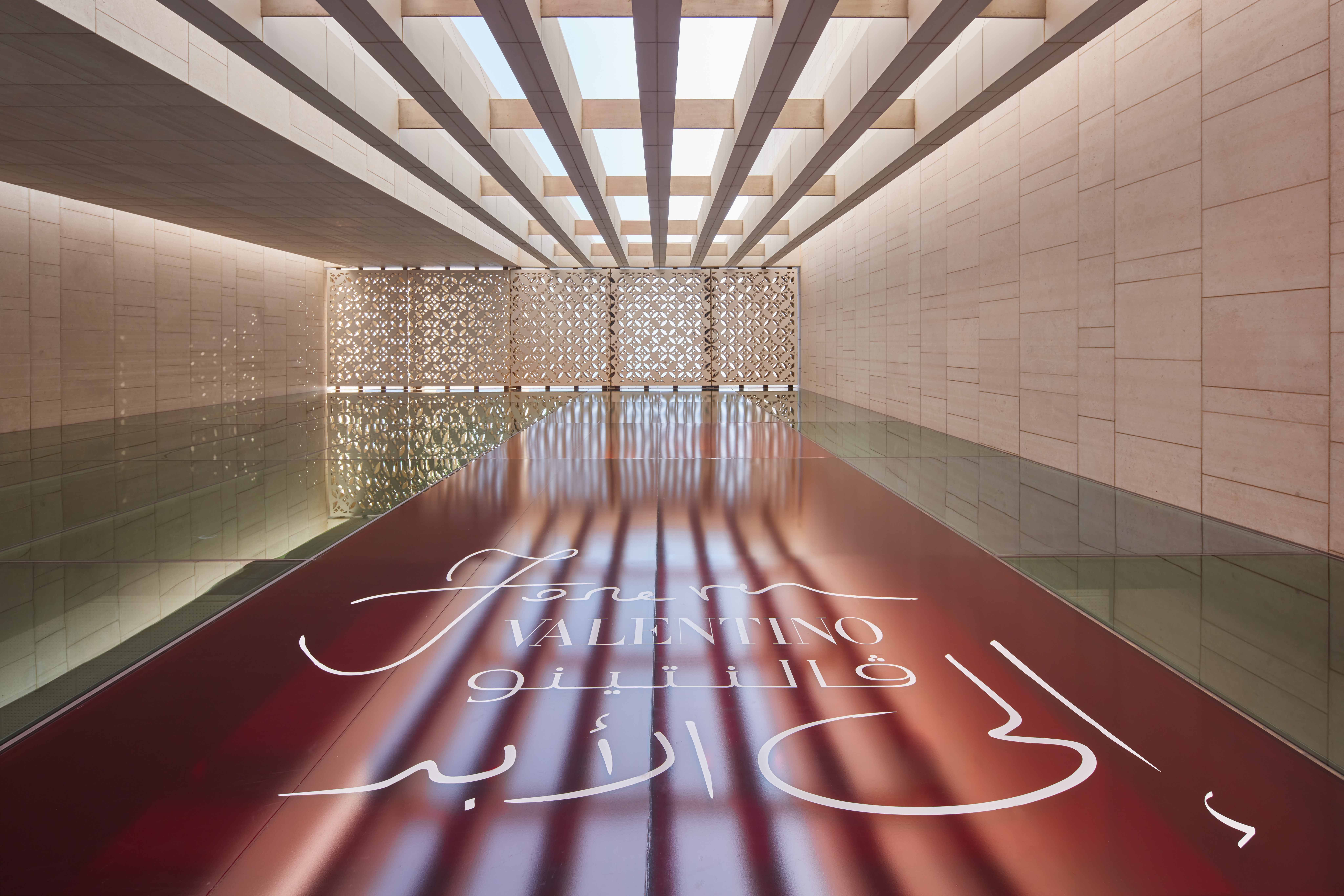
Alexander Fury: It’s interesting. It’s something Pierpaolo said when we were talking about how to display garments. And he said, “I don’t want to display things with accessories, because accessories will age things immediately.” And I think when you look at dresses, there’s a lot of dresses where I don’t think you can age them. And then you look at them in the context of the hair and makeup in a magazine picture and immediately it becomes anchored in a time that by itself, the dress isn’t. I think it’s really striking when you walk into the first room, the palazzo, that there’s these conversations between different dresses and you can’t identify in a lot of cases, that the majority of them are Mr. Valentino, but there are dresses from every creative director there. So there’s an Alessandra Facchinetti one, there are dresses by Pierpaolo when he worked alongside Maria Grazia, and by Pierpaolo himself, as well as Mr. Garavani, and it’s really difficult to identify when they’re from.
And then you place them in conversation with one another, and you have a dress from the 1960s talking to a dress from the 1980s, but you can’t identify which is which. And that was really, really striking. And it was something actually that I think we only realized when we had things in the space – you realized how timeless it was all the way through. I think it’s also because the selection of dresses we made were very much geared towards that. But it is something that kind of comes up again and again in Mr. Valentino’s work that it is of its time, but then ultimately it feels timeless, which is a very kind of interesting aspect for it.
GC: It’s almost like an oxymoron, right? It’s an exhibition, but it’s not an exhibition. Like for me, it doesn’t feel like going back to the past, it feels like the present and actually the future.
Massimiliano Gioni: That was something Pierpaolo was very deliberate about. He called it a perspective rather than a retrospective. All the clothes feel somehow of this moment because there is no chronological order. And actually yesterday was quite moving when Giammetti came,
GC: Oh, yes. How was that?
MG: He has somewhat confounded himself about who was what, and there was also a great compliment, but also a great feeling that the show feels relevant now. Even in the archive, which could have been the stuffiest part, you still look at them as objects. Of course, one is the Audrey Hepburn, but I don’t think you go through it. We really didn’t want the kind of Madame Tussauds feeling that sometimes you have in certain fashion shows. And I think again, that was something that Pierpaolo really contributed in, you know, the fitting room is this accessibility to the clothes that you don’t have when in fashion shows – they’re very monumentalized and also slightly self-important. You know, Pierpaolo really wanted the opportunity of having the clothes just on the table. And the instruments for making the clothes, the possibility of seeing the clothes like he sees it.
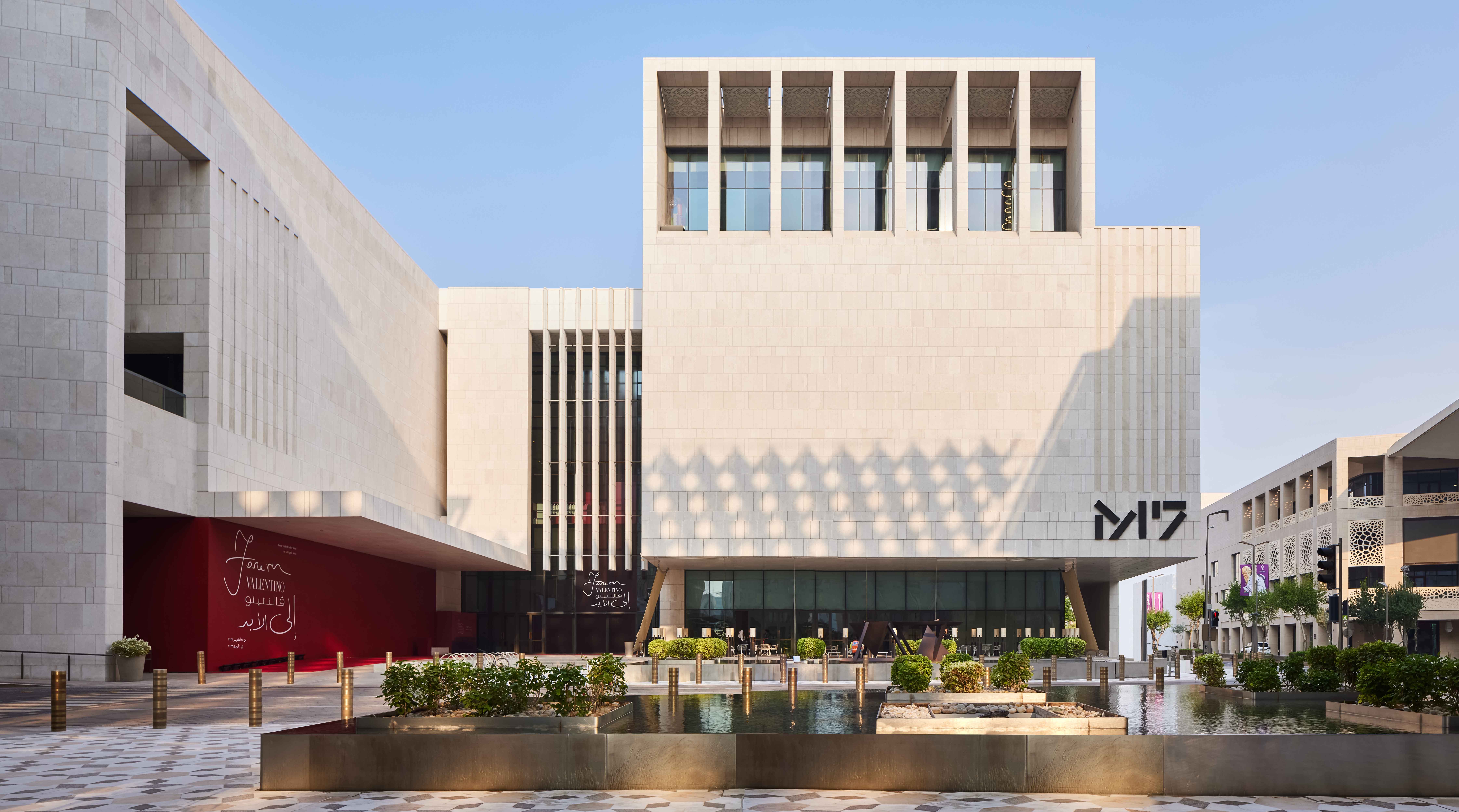
PP: Because I think he says history of dress is also the history of humans, and you still feel walking in the room there, the traces of humans that have lived in the office. So it’s not just a celebration, it’s even the history of all of us that contributed to the story of this brand. And we still carry it on with our love and our care today.
GC: When you started cooking this beautiful meal, what was the starting point? Was that the starting point? Not to do a retrospective, but rather a perspective. How did you start puzzling the pieces?
PP: I didn’t want it to be only my point of view, between all of the directors, I feel that they have different perspectives, which I wanted to be relevant in the exhibition as a precise point of view to meet the past in the exhibition. So it’s that all of them meet, could create something that would be emotional, scientific, technical.
GC: And my last question, I’m gonna leave you alone, is the exhibition going to travel?
PP: I hope so.
GC: I think humankind needs it. No, I think in this dark, dark times,
AF: I just talked to my parents and I couldn’t quite wrangle a trip for my mother and dad to Doha. I’m not sure I want my Northern English parents to. But yeah, I’d like my mom and dad to see it. That would be quite nice.
MG: There is something special about starting here given the space, the possibility to test it out. I think we first of all probably would be less relaxed if this was even Rome, more than London, New York, you know, here you take more chances. You have more space to try things out. And the conversation developed I think more as a pleasure than, you know, with the stress that would be in New York City in a sense. And that makes Doha an interesting kind of test site to then take it elsewhere.
GC: It’s kind of a good soft opening almost, on a global level, of course.
MG: Yeah. And it’s also that this is more and more a multicultural city, you know? And I think that’s also so much in the DNA in the work that Pierpaolo is doing. And you know, Rome was multicultural and it still is, but historically it’s more multicultural than we think. And who knows, maybe the empire is more here than in Italy.
AF: The thing that was really nice actually, is we had a lot of people here from the atelier to fit dresses. There’s obviously the couture viewings here, but also to work on, we had I think 34 people from the atelier. And then they took them into the atelier and they said it felt like home, which was an amazing sort of achievement for them to go into these rooms and recognize the architecture of where they work every day.
And Mr. Giammetti went into the beginning room and I think you guys had gone out and I was being like, “Oh, you know, do, do you like it?” I said something stupid like that . And he went, “You don’t understand. I’ve spent 40 years in this room.” And he was really blown away by it. He’s like, “I’ve spent 40 years in this room. It’s incredible.” And for me it’s that, it’s the people, you know, it’s Pierpaolo’s reaction. It’s the reaction of the people in the ateliers. It’s the reaction of Mr. Giammetti, the people that are embedded in Valentino who feel the emotional resonance of it. And then being able to throw the doors of that open to people and include everybody. I think that’s a wonderful kind of value to have in an exhibition.
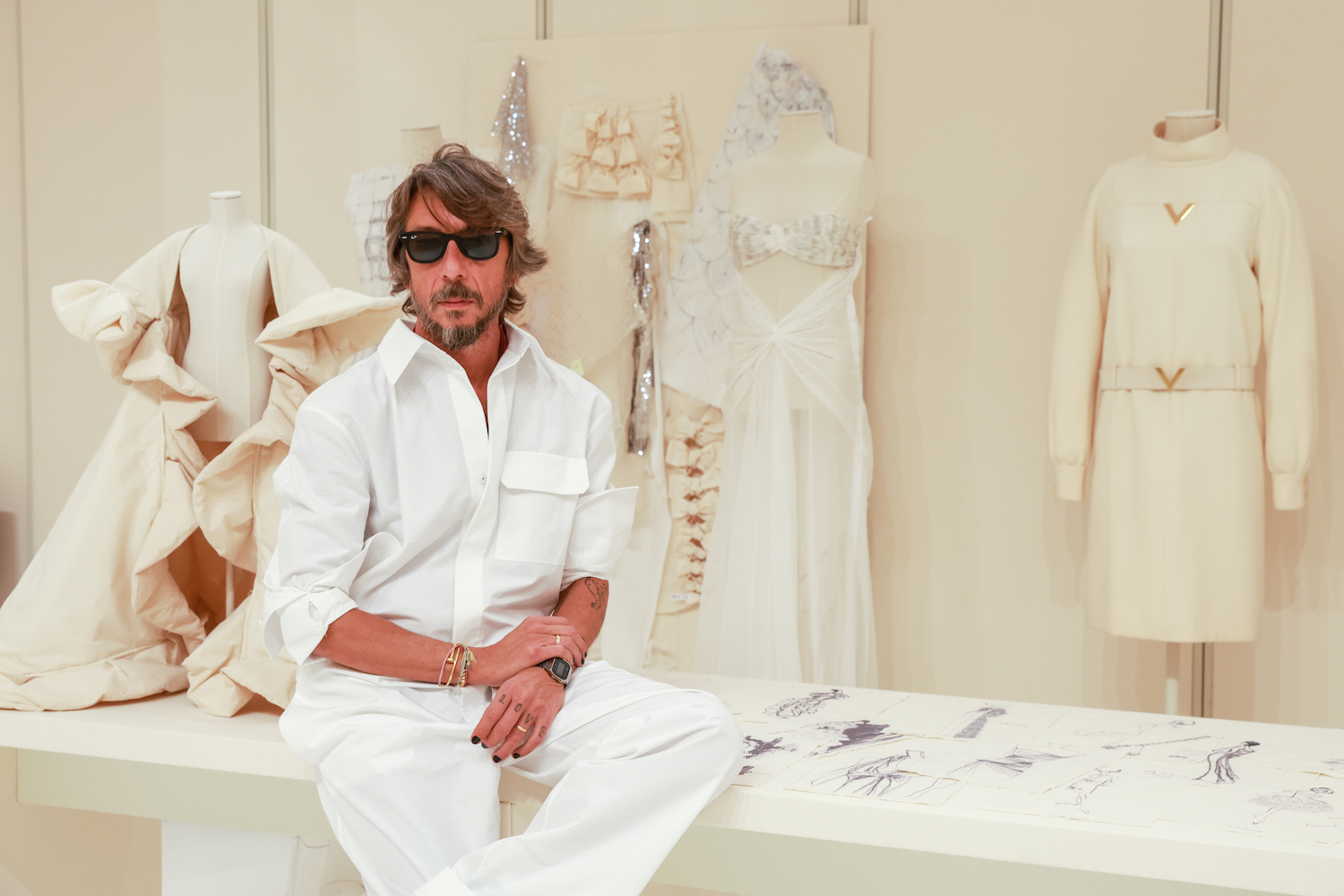
PP: It’s a way to get [the seamstresses] into their own life. Because at the end of the day, it’s not just the place of the work, it’s a place where you share your life. So it’s like art of, we all know each other, we know the stories, and every story is unique. That’s why I decided to call my dresses as the name of the seamstress who worked on the dress. Because it’s a way to celebrate. For a long time, fashion has been [based around] the solo creator.
GC: A one-man show.
PP: Now I think that it’s time to give them a relevant life. Because, if not because of them, you cannot make your dream happen.
GC: But are you, are you optimistic about the future? Because of course, now we are talking about magical ladies and also men who’ve been working in ateliers for 30 or 40 years. Do you think new generations, millennials and Gen Z will give the amount of work needed to work in an atelier and to follow that path?
PP: I think so. I think that I can see everyday that there are a lot of young people that want to be part of it. They want to discover the poetry of doing something. Maybe we miss a generation. You can see the generation of the sixties, seventies, and the young generation of twenties and thirties. Because they are not the generation in the middle. Because the generation in the middle was born in the moment of perfection. With Reagan, everything was about business and their professional life. The youngest people decide to deliver, to come and work and believe. Because they love to discover poetry. And so seeing that synergy is teaching the young generation is very touching, actually. Because you can see the young generation giving [the more established couturiers] the energy, the optimistic point of view. And they teach the techniques from school in order to pass the knowledge. So that’s why we have the school in the house, and the teachers of the school have their own seamstresses.
They come to teach eight students each year. While talking to one of the teachers, I asked her, “How do you feel?” She told me, I actually have been coming back to teach and work with these guys because when I was 13, I was obliged to work. So this made sense to all my life. So it’s very moving to see.
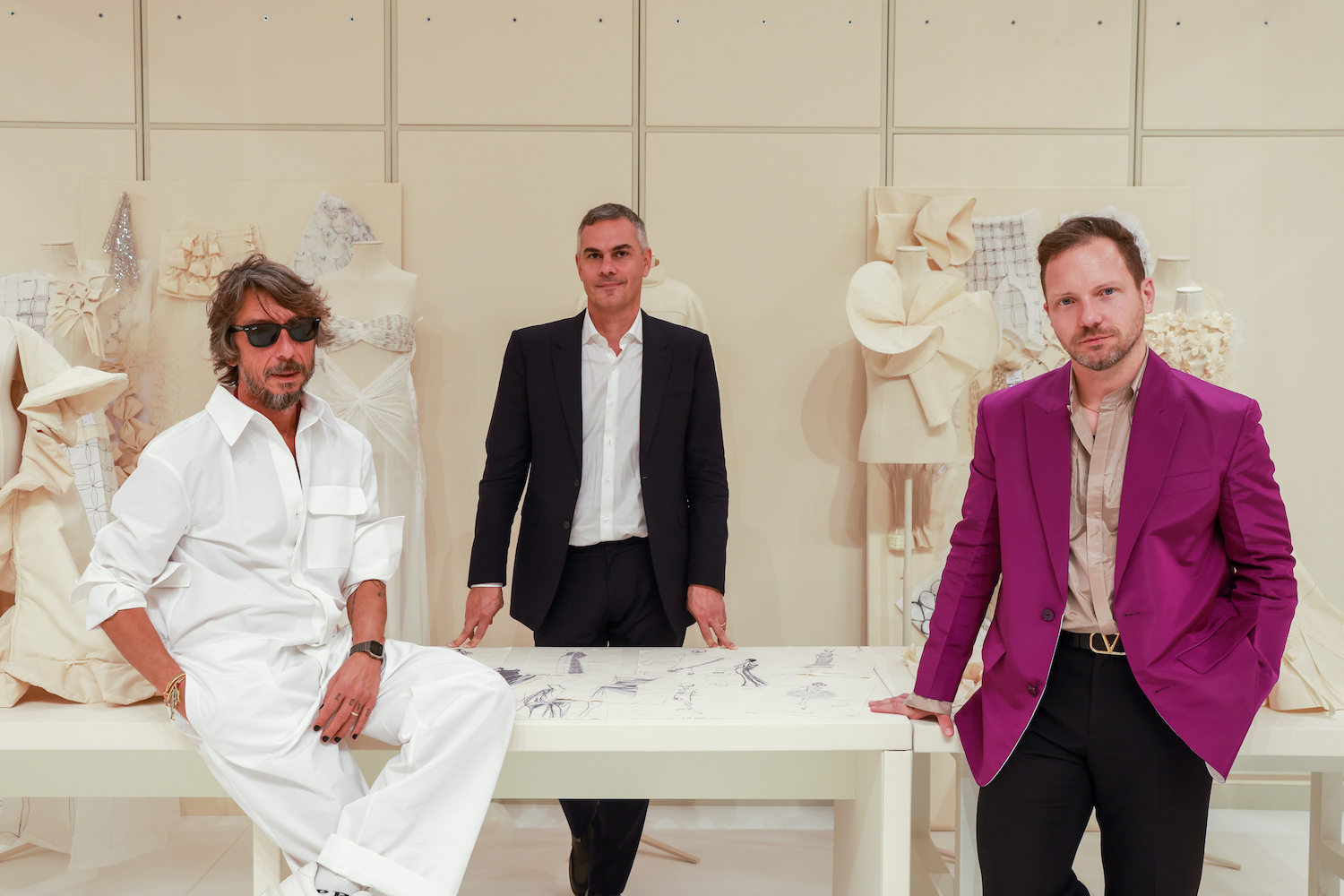
GC: Oh, absolutely.
PP: This synergy between them and seeing the young kids being so enthusiastic about her job gave her a different point of view about her life. Not a moment. So it’s very interesting to know and to witness all of this and I think that young people really understand, not the expensive showy part of fashion, but couture has freedom as self-expression. It’s extravagant for couture. It’s closer in a way to the sixties and seventies. Rather than you know, the early 2000s was more about the hours of work and the expensiveness of the techniques. Now the young generation feel couture is more like a way of expression and freedom. A sense of freedom. That’s why I feel that. In Roma at the Spanish Steps, there were lots of young people in the streets being fascinated not only about the craft, but about the ideas behind all of this.
GC: Yeah. The whole dream.
PP: The whole dream. They established the steps for, you know, everyone, not just for the top models or
GC: Celebrities or whatever,
PP: But it was about how they could project themselves on the steps. Because everyone was allowed to be there in a way in July. When in the eighties and nineties there were these big shows, everything was about the models and designers and July was actually the same. It was the same, even the dresses. The people wearing the dresses were absolutely different. There were people that maybe were not allowed to walk back then because of the proportion of the body. Because they were guys wearing feminine clothes and they were black. And maybe just one was sort of Dutch.
GC: Thank you guys so much and congrats!
Discover More
